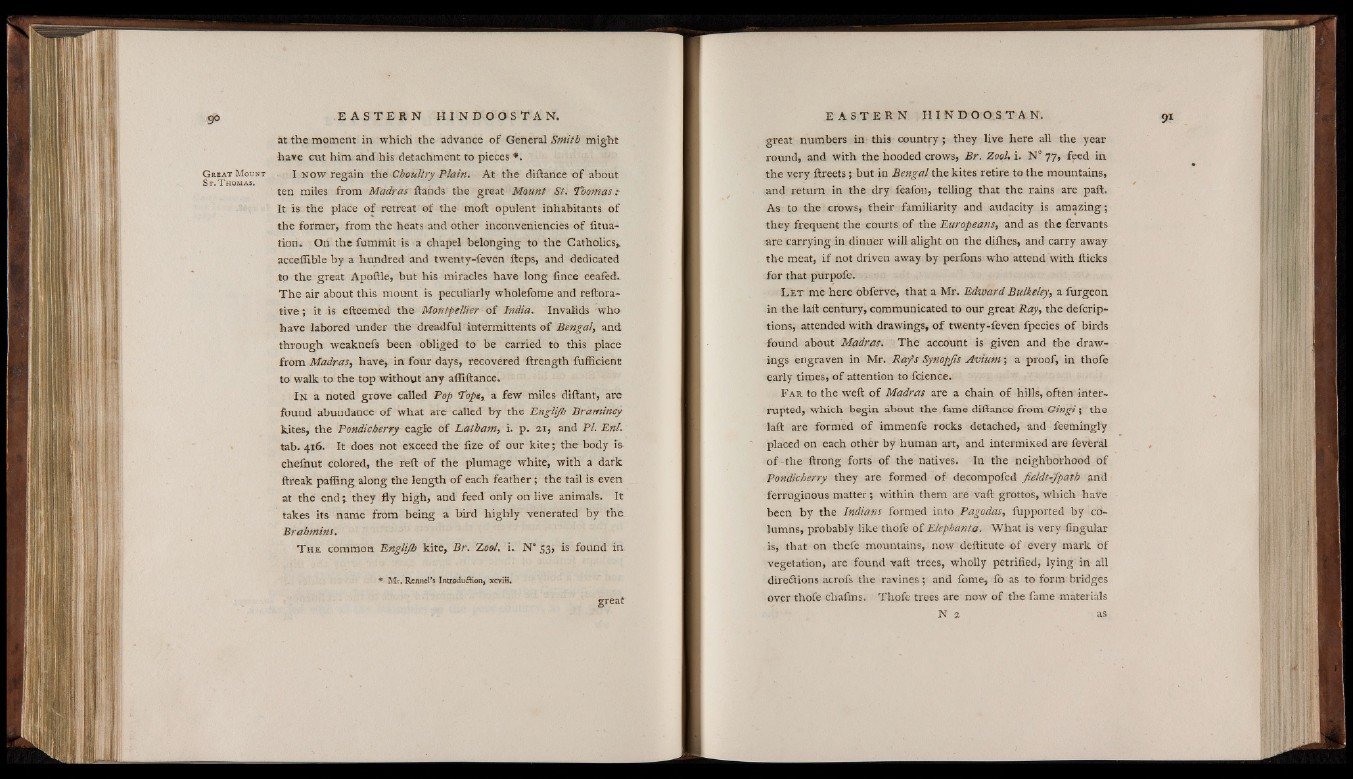
G r e a t M ount
S r . T h o m a s .
at the moment in which the advance of General Smith might
have cut him and his detachment to pieces *.
I n o w regain the ChoultryPlain. At the diftance o f about
ten miles from Madras Hands the great Mount St. Thomas:-
It is the place of retreat of the moil opulent inhabitants of
the former, from the heats and other inconveniencies of fitua-
tion. On the fummit is a chapel belonging to the Catholics*
accefiible by a hundred and twenty-feven fteps, and dedicated
to the great Apoftle, but his miracles have long fince ceafed.
The air about this mount is peculiarly wholefome and reiterative;
it is efteemed the Montpellier o f India. Invalids who
have labored under the dreadful intermittents of Bengal, and
through weaknefs been obliged to be carried to this place
from Madras, have* in four days, recovered ilrength fufficient
to walk to the top without any ailiftance.
In a noted grove called Pop Tope, a few miles diftant, are
found abundance o f what are called by the Englijh Braminey
kites, the Pondicherry eagle of Latbam, i. p. 4T, and PI. Enl.
tab. 416. It does not exceed the iize o f our kite ; the body is
ehefiiut colored, the reft o f the plumage white, with a dark
ftreak pafling along the length of each feather; the tail is even
at the end; they fly high, and feed only on live animals. It
takes its name from being a bird highly venerated by the
Brahmins.
T h e common Englifh kite* Br. Zool, i. N” 53, is found in
Mr. RenneFs Introdu&ion, xcviii.
great
great numbers in this country; they live here all the year
round, and with the hooded crows, Br. Zool. i. N° 77, feed in
the very ftreets; but in Bengal the kites retire to the mountains,
and return in the dry feafon, telling that the rains are paft.
As to the crows, their familiarity and audacity is amazing;
they frequent the courts o f the Europeans, and as the fervants
are carrying in dinner will alight on the diihes, and carry away
the meat, if not driven away by perfons who attend with flicks
for that purpofe.
L e t me here obferve, that a Mr. Edward Bulkeley, a furgeon
in the laft century, communicated to our great Ray, the defcrip-
tions, attended with drawings, o f tw.enty-feven fpecies o f birds
found about Madras. The account is given and the drawings
engraven in Mr. Ray's Synopfts Avium; a proof, in thofe
early times, of attention to fcience.
F a r to the weft o f Madras are a chain o f hills, often interrupted,
which begin about the fame diftance from Gingi; the
laft are formed o f immenfe rocks detached, and feemingly
placed on each other by human art, and intermixed are feveral
of-the ftrong forts o f the natives. In the neighborhood of
Pondicherry they are formed of decompofed fieldtdfpath and
ferruginous matter; within them are vaft grottos, which have
been by the Indians formed into Pagodas, fupported by columns,
probably like thofe of Elephanta, What is very Angular
is, that on thefe mountains, now deftitute of every mark of
vegetation, are found vaft trees, wholly petrified, lying in all
directions acrofs the ravines; and fome, fo as to form bridges
over thofe chafms. Thofe trees are now of the fame materials
N a as